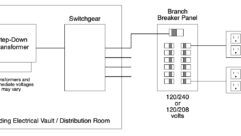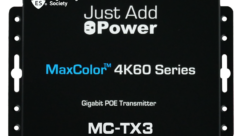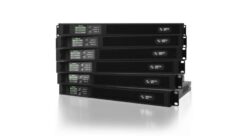The Alpha to Omega on power amps
Oct 1, 1997 12:00 PM,
Bob Bushnell
High Performance Audio Power Amplifiers, by Ben Duncan, published byNewnes, an imprint of Butterworth-Heinemann Ltd., 1996; 1,462 pp., hardcover, $56.95.
In opposition to the many books that end up as remainders or sold by thepound at the local supermarket, here’s a tome that will grace yourbookshelves and your life for some years. As the title states, the topic isaudio power amplifiers — and in detail. Is the book confined only to”hi-fi” power amplifiers, touring power amplifiers or the esoteric world ofhigh-end power amplifiers? To all three, the answer is a resounding “NO.”Duncan delves into power amplifiers from input to output to power supply –from input connectors to output connectors to power connectors. Duncandedicates chapters both to real-world testing, as well as his professionalopinions.
Throughout the book, Duncan has drawn legible schematics that are easilyunderstood because of his consistent drawing style. They are not just poorreproductions from some manufacturer’s service manual. The book has goodmargins (for notes), and bold-face section headings improve readabilityover pages of solid copy.
This isn’t a book just for the amplifier designer. Even if you’re designingbasic sound reinforcement systems for normal installations with less thankilowatts of output power, Duncan covers many topics you need, not only forthe initial installation, but also for continued, trouble-free operation.
In his opening chapter, the author covers “adjectives that describe sound.”He lists the adjectives and defines the various synonyms for eachadjective. In cases of negative adjectives, he describes a possible causefor the condition.
Duncan analyzes many amplifier designs, both good and bad. Some designerswill appreciate this book; others will realize their masquerade. He usesdetailed real-world information, not a cookbook approach. What do you wantto know about amplifier topologies, classes and modes? Duncan wrote some 80pages on this frequently misunderstood subject.
How basic is a gain control? Some people feel that gain control should notbe accessible on a power amplifier. Nevertheless, Duncan examines thisurbane device, and in a context dear to my heart, considers the source andoutput resistances presented by a potentiometer in a real circuit.
Gain controls, VCAs, common mode rejection and frequency response of aninput port are some of the many topics the author covers in Chapter 3.Chapter 5 studies features of the power stage. Some of the topics areoutput stability and the output network, mapping V-I capability, outputstage cooling requirements, heat exchange and thermal protection.
The chapter on power supplies is not just dry data, but meaningfulinformation concerning the ubiquitous part of any active electronic device.He scrutinizes passive supplies, switching supplies, resonant supplies, andCarver’s use of Class G amplifier topology together with PWM (pulse widthmodulation) power supplies. Before you shrug aside switching supplies asbeing too noisy because of EMI considerations, Duncan pays more than lipservice to the vast subject of EMI as applied to non-passive power suppliesused in the real world.
How many test specifications can you perform on audio power amplifiers?Duncan probes into 27 separate specifications, ranging from the test loadto peak output current capability. They won’t be listed here, but hisspecification list is thorough, and the examination of each is quitecomplete, considering that entire books cover only THD measurements.
EMI and EMC (electro-magnetic compatibility) are probed in the chapter onreal world testing. Adverse loads (what about loudspeakers?) and acousticnoise are other topics found in that chapter.
In Chapter 9, “Choice, application installation and set-up,” the authorspells out those topics in detail. He includes a neat section on what heterms “howlers,” which aren’t a form of feedback but are, to quote hisopening paragraph, “some common and ‘it really happened’ defects to lookfor in manufactured units based on hundreds of reviews of both domestic andprofessional power amplifiers costing from 150 pounds ($325) up to 5,000pounds ($10,850), or even more.”
His notations are revealing, even without the manufacturers’ names (forobvious reasons). He discusses the use of RCCBs (residual current circuitbreakers) – what we Yanks call GFI protectors.
Chapter 10 covers maintenance and surgery. One section of that chaptercovers bipolar transistors. The UK refers to NPN or PNP devices as BJTs orbipolar junction transistors. Much more descriptive than simply transistor,as we colonials tend to lump FETs with BJTs.
His examination of BJTs begins with a simple but effective circuit fortesting BJTs and then proceeds to effective use of a DMM or VOM. There’s acircuit for matching of complementary pairs. He reviewsMOSFETs, thendiodes, zeners and LEDs. This is just the chapter on maintenance andsurgery, not the entire book! Exclamation points are generally frowned onin book reviews, but this book deserves them.
One appendix lists power amplifier manufacturers throughout the world.Another appendix is a short list of active devices by type and pinout;ready reference in emergencies. Still, another appendix is on poweramplifier terminology. As opposed to humans, an appendix in a book isactually useful, and more than one is even better.
Throughout the book, Duncan references various terms, some unique to theUK. (But the author is English, after all.) Fortunately, he provides athorough glossary, including some terms that were new to me. At the end ofeach chapter, Duncan provides a further reading list. Granted, many of hisreferences are to British publications. He refers to at least two writingsof the late but stellar physicist, Richard Heyser. Among otheraccomplishments, Heyser was responsible for the field of time domainsymmetry (TDS) measurements. TDS doesn’t apply to power amplifiers, butthen, why not?
Criticisms? Very few. In Appendix 1, he provides a thorough history ofaudio as relating to power amplifiers. He might have given more credit toAT&T and Bell Laboratories for their many contributions to audio, notablyloudspeakers and power amplifiers. He also credits Audio Fidelity forintroducing the first stereo LP in the United States without mentioningthat the disc was cut by Westrex as a trial for Audio Fidelity. Westrex, infact, developed the first stereo LP disc recording head.
Not a cheap book ($62.65 from an Internet bookstore), but not casualreading. In short, this is a book for reading, reference and lending (toclose friends only, otherwise you may not get it back).










